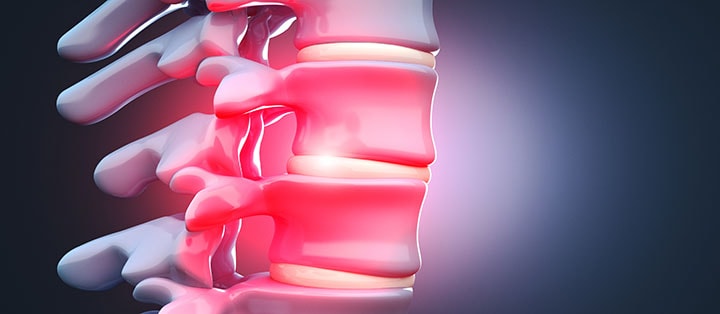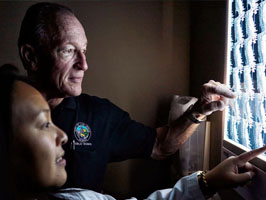The spine is made up of many vertebrae, stacked atop one another and separated by cushioning discs made of cartilage. Each vertebrae has a small hole in its center. When aligned, these holes correspond to create the spinal canal, which houses the spinal cord. As an extremely important part of the body, the spinal cord transmits neural signals between the brain and the bodily systems that sustain human life.
The term canal stenosis, also known as “spinal stenosis,” refers to the abnormal narrowing of the spinal canal. As the cartilage discs that absorb shock in the spine shrink and bone spurs develop, the spinal canal can become smaller and tighter, resulting in pinched nerves and other complications. This medical condition can affect the spinal cord, surrounding tissues and vertebrae and cause intense pain and discomfort.
With proper treatment, canal stenosis can usually be treated or proactively managed. The method of care recommended will depend largely upon the underlying cause and severity of the spinal stenosis.

Canal Stenosis Causes
As we grow older, our spines begin to change. Intervertebral discs lose water content and do not absorb shock as effectively as before. By age 50, up to 95% of Americans evince signs of spinal degeneration. While natural aging and general wear and tear are the primary causes of spinal stenosis, there are other factors that can cause or exacerbate this condition, including:• Sudden injury or trauma, often resulting from a fall, sports accident or motor vehicle accident
• Osteoarthritis
• Rheumatoid arthritis
• A genetic disease or birth defect
• Spondylolisthesis
• Tumors
• Disc degeneration
• Problems with the facet joints
• Bone spurs and the overgrowth of bone
• Herniated discs
• Paget’s Disease
• Thickened ligaments
• Other health issues
Some of the underlying causes of canal stenosis are easily remedied, while others can become life-threatening if not treated promptly. For this reason, it is imperative to obtain a comprehensive and clear diagnosis without delay. If you believe you may be experiencing canal stenosis or a similar issue, speak with a spine professional immediately.
Canal Stenosis Symptoms
The symptoms of spinal stenosis vary widely depending on the location of the canal narrowing and the severity of the condition. However, some of the most frequently occurring symptoms are:• Pain in the lower back, legs, hips, groin and buttock areas
• Frequent falling and sudden clumsiness
• Hot and cold feelings in the legs, burning sensations
• “Foot drop,” or the impression that the foot is slapping against the ground when walking
• Discomfort and difficulty when walking
• Numbness and weakness in the lower back, legs, hips, groin and buttock areas
• Symptoms that worsen when active or that improve when lying down, sitting or leaning forward
Because of the wide array of symptoms associated with canal stenosis and the various regions of the body this condition can affect, patients suffering from canal stenosis may not even suspect they are battling a spine-related issue. Canal stenosis most often occurs in the lumbar spine and typically affects the lower limbs. However, only a medical professional can definitively diagnose spinal stenosis.

